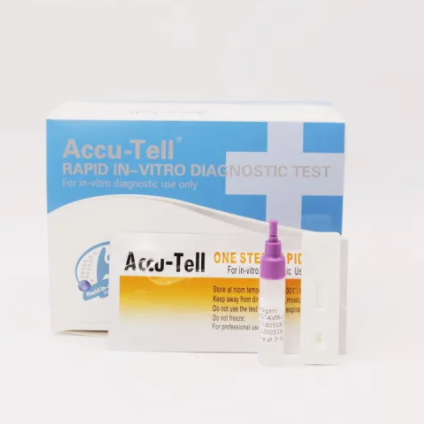Rotavirus Test: A Vital Tool for Diagnosing Rotavirus Infections
Rotavirus is a highly contagious virus that affects the gastrointestinal tract, causing severe diarrhea and vomiting, particularly in infants and young children. Timely and accurate diagnosis of rotavirus infections is crucial for appropriate medical intervention and preventing the spread of the virus. This is where the rotavirus test plays a vital role. In this article, we will delve into the details of the rotavirus test, its significance, procedure, and its impact on public health.
Understanding Rotavirus
Rotavirus is a leading cause of severe gastroenteritis, responsible for numerous hospitalizations and deaths worldwide. It spreads through the fecal-oral route, primarily via contaminated hands, objects, or surfaces. The virus targets the lining of the small intestine, resulting in the disruption of normal absorption and digestion processes.
The Importance of Rotavirus Testing
Rotavirus testing is essential for several reasons:
Accurate Diagnosis: The symptoms of rotavirus infection can be similar to other causes of gastroenteritis. A rotavirus test provides a definitive diagnosis, ensuring appropriate treatment and management.
Infection Control: Identifying rotavirus cases helps implement necessary infection control measures, such as isolation precautions and proper hygiene practices, to prevent the spread of the virus within healthcare settings and communities.
Public Health Surveillance: Rotavirus testing plays a critical role in monitoring the prevalence and trends of rotavirus infections, assisting public health authorities in developing targeted prevention and intervention strategies.
The Rotavirus Test Procedure
The rotavirus test typically involves collecting a stool sample from the patient and analyzing it for the presence of rotavirus antigens or genetic material. There are two main types of rotavirus tests:
Enzyme Immunoassay (EIA): This test detects rotavirus antigens in the stool sample. It is a rapid and widely used method, providing results within a few hours. EIA tests are commonly performed in hospitals, clinics, and laboratories.
Polymerase Chain Reaction (PCR): PCR testing detects the genetic material (RNA) of the rotavirus in the stool sample. It is a highly sensitive and specific method, capable of detecting even low levels of the virus. PCR tests are usually performed in specialized laboratories.
The healthcare provider or laboratory personnel will guide patients and caregivers on the collection and handling of the stool sample. It is essential to follow the instructions carefully to ensure accurate test results.
Interpreting Rotavirus Test Results
The rotavirus test results are typically reported as positive or negative:
Positive Result: A positive result indicates the presence of rotavirus antigens or genetic material in the stool sample, confirming a rotavirus infection. Further medical evaluation and appropriate management will be initiated based on the positive result.
Negative Result: A negative result means that no rotavirus antigens or genetic material was detected in the stool sample. However, a negative result does not completely rule out a rotavirus infection, as the virus may not always be present in the sample or the levels may be below the detection limit of the test.
It is crucial to consult with a healthcare professional to interpret the test results accurately and determine the best course of action for the patient.
Conclusion
The rotavirus test is a vital tool in diagnosing rotavirus infections. Its accurate and timely results enable healthcare providers to provide appropriate treatment and implement infection control measures. Additionally, rotavirus testing contributes to public health surveillance, helping monitor the prevalence and trends of rotavirus infections. By understanding the importance of rotavirus testing, we can take proactive steps to diagnose and manage rotavirus infections effectively.
FAQs (Frequently Asked Questions)
Q1. How is rotavirus transmitted?
Rotavirus is primarily transmitted through the fecal-oral route, commonly via contaminated hands, objects, or surfaces. It can also spread through respiratory droplets.
Q2. Who is at the highest risk of rotavirus infection?
Infants and young children, especially those aged 6 months to 2 years, are at the highest risk of rotavirus infection. However, people of all ages can contract the virus.
Q3. Is there a vaccine available for rotavirus?
Yes, vaccines are available to prevent rotavirus infections. These vaccines are usually administered in early infancy and have been shown to be highly effective in reducing severe rotavirus-related illnesses.
Q4. How long does a rotavirus infection last?
A rotavirus infection typically lasts for about 3 to 8 days. However, the duration and severity of symptoms may vary from person to person.
Q5. Can adults get infected with rotavirus?
While rotavirus infections are most common in young children, adults can also contract the virus, especially those with weakened immune systems.


Comments
0